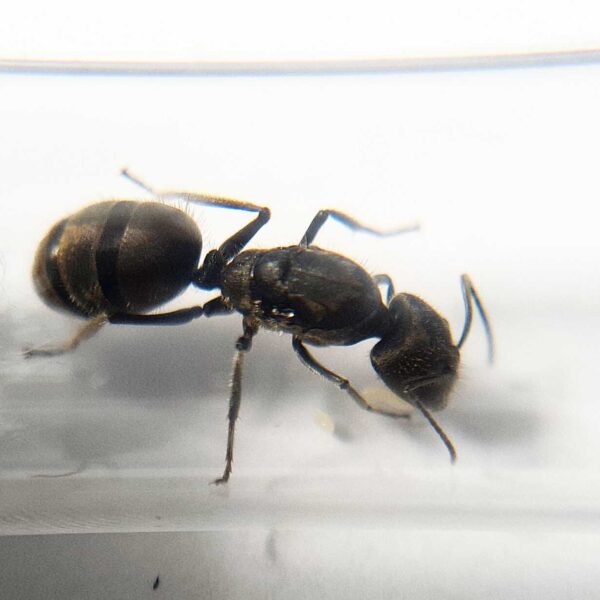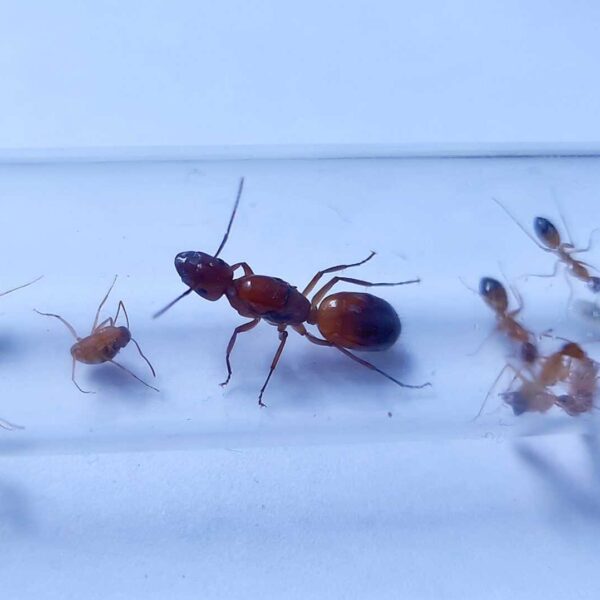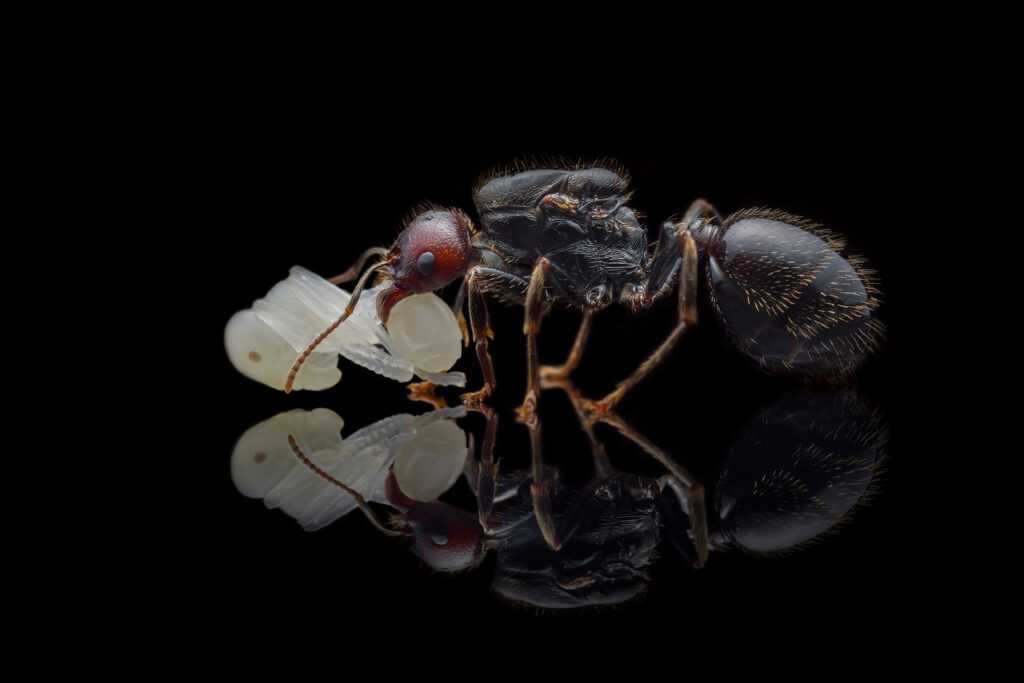Camponotus barbaricus: Monogynous Ant Species
The Camponotus barbaricus is a species of ants known for their monogynous colony type, meaning they have only one queen per colony. This unique characteristic sets them apart from other ant species.
Colony Size: Up to 10,000 Workers
The colony size of Camponotus barbaricus can vary, but it can typically have up to 10,000 workers. This large number of workers ensures the efficiency and productivity of the colony.
Development Rate: Medium
The development rate of Camponotus barbaricus is considered to be medium. This means that their growth and progression from larvae to adult ants is neither too slow nor too fast.
Size
- Queen: The queen of Camponotus barbaricus measures about 15-17mm in length. She is the largest member of the colony and plays a crucial role in reproduction.
- Workers: The workers of Camponotus barbaricus are significantly smaller, ranging from 6-9mm in length. They are responsible for various tasks within the colony, such as foraging for food and caring for the queen and her offspring.
- Majors: The majors, also known as soldiers, in a Camponotus barbaricus colony are larger than the workers, measuring around 8-16mm in length. They have a specialized role in defending the colony against threats.
Color: Camponotus barbaricus is characterized by its glossy black color with a reddish veil. This unique coloration makes them visually striking and distinguishes them from other ant species.
Nutrition
Camponotus barbaricus has specific dietary requirements to thrive in captivity. Their nutrition mainly consists of:
- Food insects: They primarily feed on a variety of food insects like cockroaches and crickets. These insects provide them with essential proteins and nutrients for their growth and overall well-being.
- Syrup: They can also consume syrup made from a mixture of water and honey, preferably in a ratio of 4:1. This syrup serves as a source of carbohydrates for the ants.
- Fruits and vegetables: Camponotus barbaricus can benefit from a diet that includes fruits and vegetables. These natural sources of vitamins and minerals are essential for their health and vitality.
- Jelly: Providing jelly to the ants can be an additional source of nutrition, supplementing their diet with sugars and other necessary elements.
- Cooked chicken: They can also consume cooked chicken without salt. This provides them with a source of protein.
By offering a varied diet that includes these food sources, you can ensure the optimal nutrition and well-being of your Camponotus barbaricus colony. For more information on ant nutrition and other ant species, visit the ants category on our website.
Humidity and Temperature
Proper humidity and temperature levels are crucial for the health and development of Camponotus barbaricus. Here are the ideal ranges:
- Arena Humidity: The humidity in the arena, where the ants are kept, should be maintained at around 30-50%. This level of humidity creates a suitable environment for the ants to live and thrive.
- Nest Humidity: In the nest area, the humidity should be kept between 40-60%. This range replicates the natural habitat of Camponotus barbaricus and promotes their comfort and well-being.
- Arena Temperature: The temperature in the arena should be maintained at a range of 24-28 °C. This ensures a warm and suitable environment for the ants.
- Nest Temperature: The temperature in the nest area should be slightly lower, around 22-26 °C. This variance in temperature mimics the natural conditions ants experience in the wild.
By maintaining proper humidity and temperature levels, you can provide the ideal living conditions for your Camponotus barbaricus colony.
Features of the Species
Camponotus barbaricus ants stand out among the various ant species, possessing several notable features:
- Size: They are considered one of the largest ant species in Europe. Their substantial size makes them visually impressive and captivating to observe.
- Frugality: Camponotus barbaricus ants are known for their frugal nature. They are efficient in their resource utilization and can make the most out of available food sources.
- Aggressiveness and Defense: While generally peaceful, Camponotus barbaricus ants can display aggressiveness and defensiveness when their nest is in danger. They have strong mandibles that can deliver a painful bite if provoked.
These distinguishing characteristics make Camponotus barbaricus a fascinating species to keep and observe in a controlled environment.
Recommended Nests for Breeding
When breeding Camponotus barbaricus, it is essential to provide them with suitable nests. Here are a few recommended nest materials:
- Acrylic: Nests made of acrylic can provide a transparent view into the ants’ activities, allowing for easy observation and monitoring.
- Cork: Cork nests offer a natural and aesthetically pleasing environment for the ants. They can also provide good insulation and moisture retention.
- Plaster: Plaster nests are durable and provide a stable and secure environment for the colony. They can be easily maintained and cleaned.
- Aerated Concrete: Nests made of aerated concrete offer good ventilation and insulation properties, ensuring the comfort of the ants.
Choosing the right nest material is crucial for the well-being and success of your Camponotus barbaricus colony.
In conclusion, Camponotus barbaricus is an intriguing species of ants characterized by their monogynous colony type, impressive size, and unique characteristics. By meeting their specific dietary needs, maintaining proper humidity and temperature levels, and providing suitable nests, you can create an ideal environment for your Camponotus barbaricus colony to thrive and flourish.


















Reviews
There are no reviews yet.